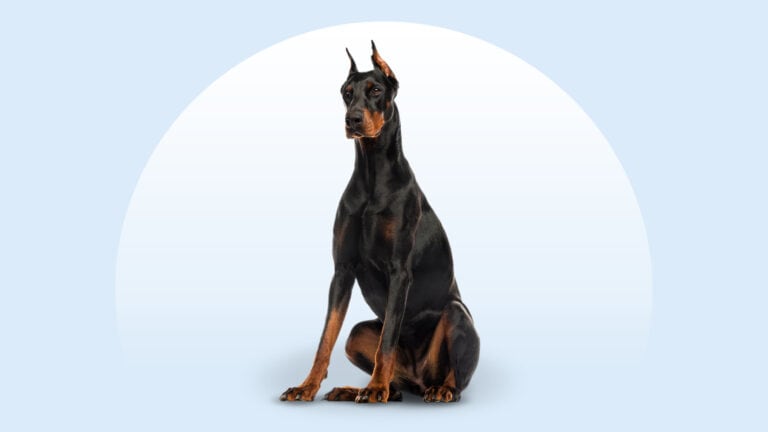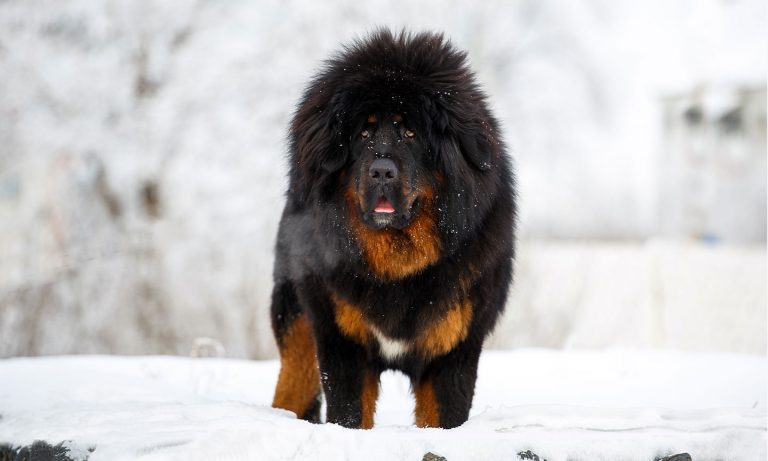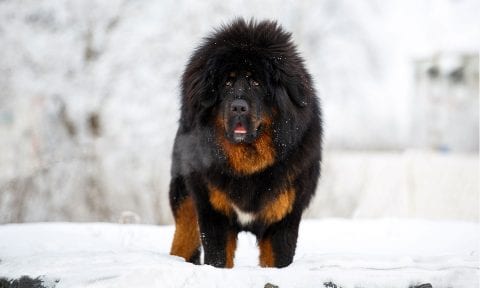Doberman Pinscher vs Tibetan Mastiff

Breed Snapshot
Best For
The Doberman Pinscher is a large, sleek and muscular breed originally bred in Germany to be a guard dog. Though they have a long history serving as protectors, these highly trainable, energetic dogs also make...
The Doberman Pinscher is a large, sleek and muscular breed originally bred in Germany to be a guard dog. Though they have a long history serving as protectors, these highly trainable, energetic dogs also make devoted companions and excel in active families.
Doberman Pinscher Temperament
Dobermans are highly intelligent, athletic and alert—all things that make them great guard dogs, which is what they were bred to do. And Dobies take their job as guard dog extraordinaire very seriously. This drive, along with their imposing physical appearance, has earned them a reputation of being not...
Dobermans are highly intelligent, athletic and alert—all things that make them great guard dogs, which is what they were bred to do. And Dobies take their job as guard dog extraordinaire very seriously. This drive, along with their imposing physical appearance, has earned them a reputation of being notoriously protective. But when the pup parent provides the proper training, socialization and structure, these dogs are also a loving member of the family.
You’ll soon discover that, along with their formidable presence, Dobermans possess a deep devotion to their people. In fact, they bond so deeply with their humans and are so dedicated to their families, these affectionate dogs are sometimes referred to as “Velcro dogs.”
In addition to their work as guard dogs, Dobermans have a long history as police and military dogs, dating back to the early 20th century. Dobermans even assisted U.S. Marines during World War II.
Doberman Pinscher Traits

Breed Snapshot
Best For
The majestic and independent Tibetan Mastiff makes a devoted family pet. Ranking among the largest dog breeds, they thrive with a job to do and plenty of room to roam.
Tibetan Mastiff Temperament
Tibetan Mastiffs are independent introverts who tend to be wary of strangers but are loving and loyal to their people. Though personality can vary from one dog to the next, these dogs tend to be headstrong and often think they know what’s best and view themselves more as equ...
Tibetan Mastiffs are independent introverts who tend to be wary of strangers but are loving and loyal to their people. Though personality can vary from one dog to the next, these dogs tend to be headstrong and often think they know what’s best and view themselves more as equal partners than pets.
Like all dogs, Tibetan Mastiffs require proper socialization from the time they’re a puppy. But with plenty of exposure to different people, pets and situations throughout their lives, they’ll be more accepting, though perhaps still aloof, reserving their affection for loved ones.
Pet parents need to be diligent about working with their pup to prevent biting tendencies. They have a bite force of 500 pounds, stronger than that of an American Pit Bull Terrier or German Shepherd, so even a playful bite could do major damage.
Tibetan Mastiff puppies can be taught to get along well with children and other pets when raised with them, but as adults, they may be less accepting of new dogs or other people’s children. And with their sheer size and strength it’s a good idea to supervise even well-socialized Tibetans around young children, cats or small dogs. Remember to teach all children how to interact gently and respectfully with dogs.
Their bossy natures make them a bad fit for obedience competitions, and they’re not built for agility or speed. But give these dogs some sheep, goats or cattle to guard, and watch them excel. They were bred to guard livestock, after all, and they’re at their best and happiest when they’re allowed to be watchful over their domain.




